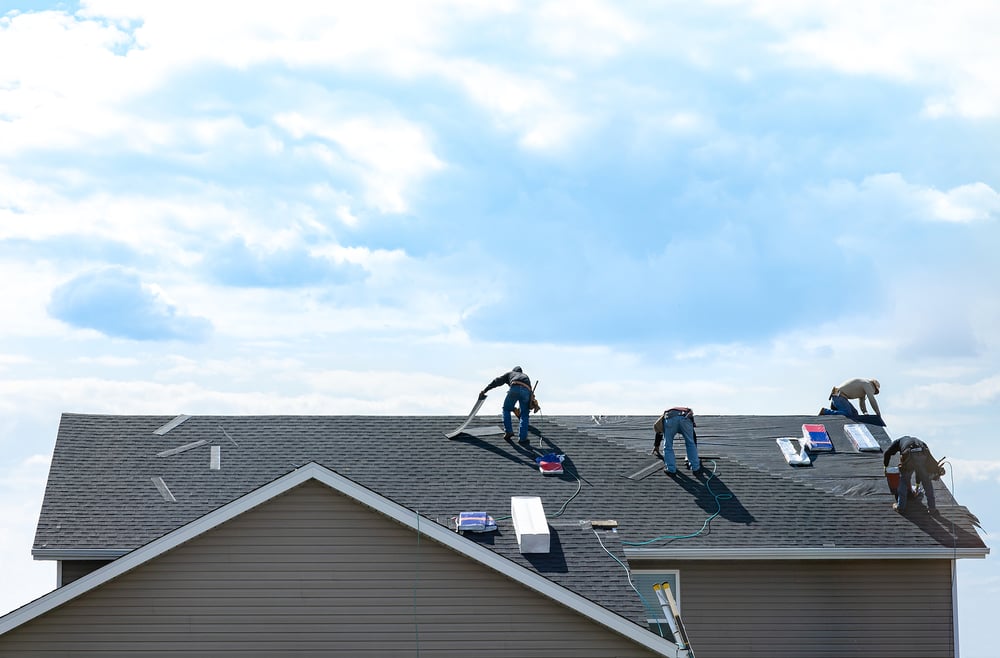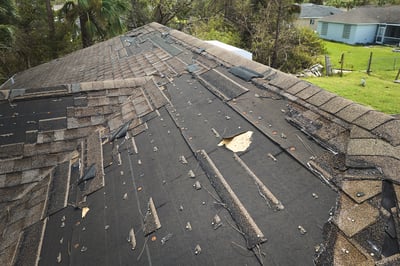
As a homeowner, when it comes to the roof over your head, you can’t take any chances. A roof is critical to the structure of a house. Not only does it act as a shield against the elements—like rain, snow, and extreme temperatures—but it also keeps moisture out, preventing the growth of mold and other potentially dangerous substances. So, when is it time to replace your roof?
Telltale Signs It’s Time to Replace Your Roof
You probably don’t notice or think about your roof every day, but as a responsible homeowner, it’s something you need to check in on every once in a while. And you don’t have to be a roofing expert to be able to notice the signs that your roof is in need (or almost in need) of a replacement.
Old Age
Like everything else, your roof has a limited lifespan. Even if it’s giving you no major issues, after a certain number of years, its time is just up. As a roof ages, it can become structurally unsound and unable to withstand all of the things it’s designed to defend against; if left unaddressed, it can become unstable and even collapse. A roof’s life expectancy is dependent on the type of material it’s made of, as well as other factors like the climate, weather conditions, material quality, the building and design, and maintenance. Here’s a general rule of thumb:
- Asphalt shingles: 20 – 30 years
- Clay/concrete: 100+ years
- Metal: 40 – 80 years
- Slate: 60 – 150 years
- Wood: 25 years
Exterior Damage
 Next time you’re up on a ladder cleaning out the gutters, take a quick look at the roof and note any signs of exterior damage. With asphalt or wooden shingles, you might see that some are curling or buckling, missing, or appear warped. With metal, slate, rubber, clay, or concrete tiled roofs, you may see spots that look thin or cracked, are missing pieces, are dented, or are worn. In some cases, minor issues can be repaired without replacing the whole roof. If any areas are sagging or drooping, that’s a sign that the roof has likely weakened from moisture, which would likely require a replacement.
Next time you’re up on a ladder cleaning out the gutters, take a quick look at the roof and note any signs of exterior damage. With asphalt or wooden shingles, you might see that some are curling or buckling, missing, or appear warped. With metal, slate, rubber, clay, or concrete tiled roofs, you may see spots that look thin or cracked, are missing pieces, are dented, or are worn. In some cases, minor issues can be repaired without replacing the whole roof. If any areas are sagging or drooping, that’s a sign that the roof has likely weakened from moisture, which would likely require a replacement.
Leaks and Daylight Shining Through
Signs of real roof troubles may present themselves without you even needing to look for them. When in your attic, you shouldn’t be able to see any daylight coming through the roof boards. Also, any signs of moisture in the attic—like water stains on the roof boards, damp insulation, or obvious dripping—are indicators of a leaky roof.
Benefits of Replacing Your Roof
When you replace your roof, not only do you improve your home’s safety, but you may also reap potential other benefits, like:
- Lower Utility Bills : Today’s shingles are designed to do more than just keep your house dry; some repel heat. This means your HVAC system may not have to work as hard to keep the house cool. And by using less energy, you save money on utilities!
- Higher Home Resale Value: A new roof can increase a home’s curb appeal and offer a high return on investment. Most potential buyers prefer homes that won’t require a lot of expensive structural work. Plus, a new roof demonstrates you’ve properly maintained the property.
- Reduced Insurance Rate: Since you minimize the chance of weather-related damage when you replace your roof, insurance providers may reward your reduced risk with reduced premiums!
Though not as glamorous as other home improvement projects, like installing new countertops or painting the walls, roof replacements are critical for keeping your home in good working order and for protecting your family. And if you’re ready to replace your current homeowners insurance policy with more affordable coverage that’s suited to your unique needs, contact World Insurance.
This article is not intended to be exhaustive, nor should any discussion or opinions be construed as legal advice. Readers should contact legal counsel or an insurance professional for appropriate advice.
GET STARTED WITH A FREE CONSULTATION
Creating a custom insurance or benefits package is critical for companies of all sizes.